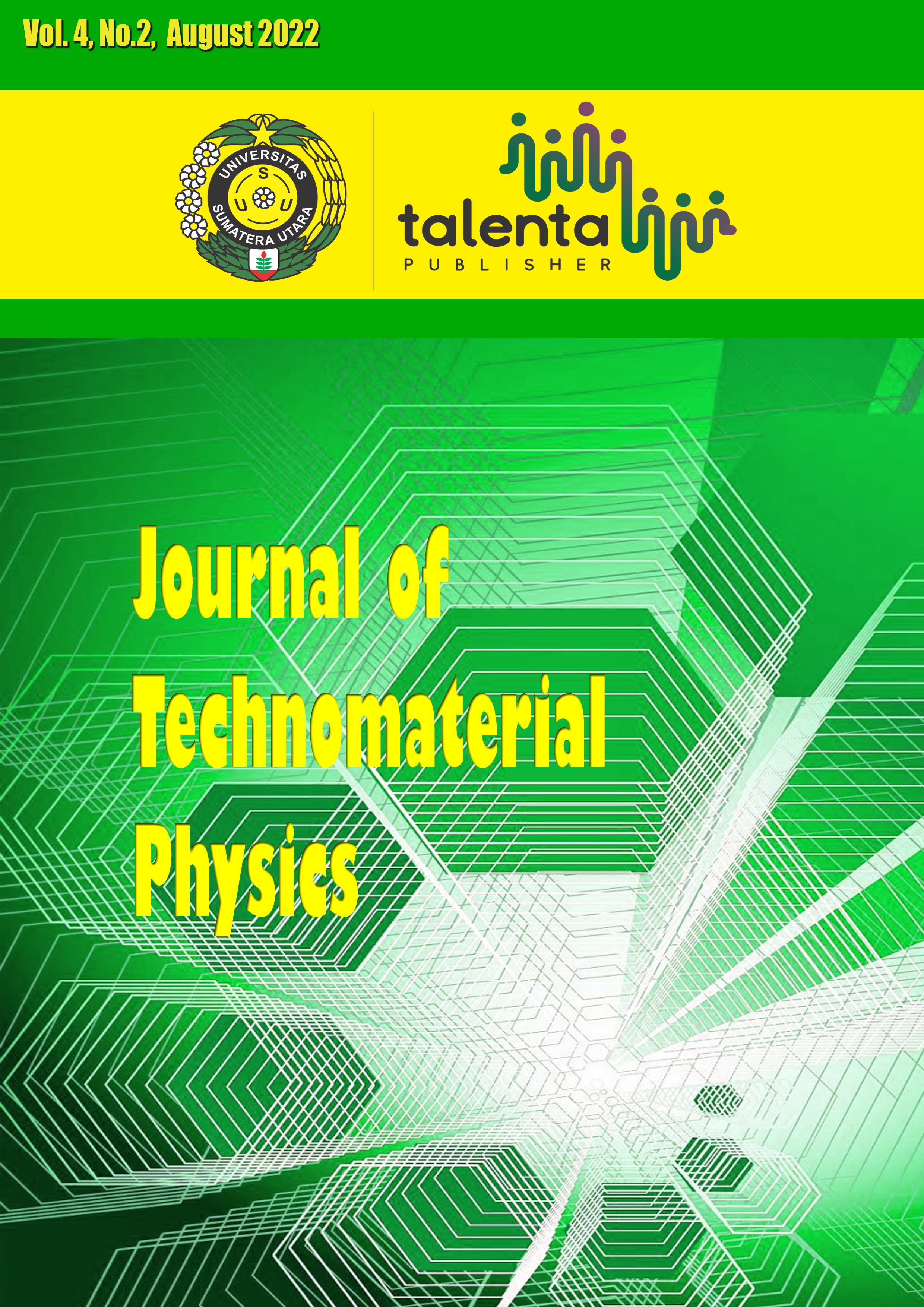Synthesis of MnFe2O4 Nanoparticles as a Basic Material for Microwave Absorber
DOI:
https://doi.org/10.32734/jotp.v4i2.7870Keywords:
Coprecipitation, MnFe2O4, Nanoparticles, Iron sandAbstract
This work aimed to synthesize MnFe2O4 nanoparticles using the coprecipitation method. Manganese chloride dihydrate (MnCl2.4H2O) and iron sand from South Cianjur, Indonesia, were used as a precursor for MnFe2O4 nanoparticle synthesis. The iron sand elements and compounds were tested using X-Ray Fluorescence (XRF). MnFe2O4 nanoparticle was characterized using X-Ray Diffraction (XRD), Scanning Electron Microscope-Energy Dispersive X-Ray (SEM-EDX), and Vector Network Analyzer (VNA). The X-Ray Fluorescence test result showed that 70.54% of South Cianjur contained iron sand. The SEM test result showed that the nanoparticles have an average size of  73.75 nm with a round shape, which was attributed to the agglomeration process. The EDX test result showed that the synthesized nanoparticle contained only Mn, Fe, and O elements without contaminants. The XRD test result showed that the crystal phase of MnFe2O4 was formed with a crystal size of less than 27 nm. The largest reflection losses in the 11.5 - 12.5 GHz range were found in MnFe2O4 with 1:2 variation, i.e., 35.08 dB. This study found that adding iron sand increases MnFe2O4 microwave absorption.
Downloads
Downloads
Published
Issue
Section
License
Copyright (c) 2022 Journal of Technomaterial Physics

This work is licensed under a Creative Commons Attribution-ShareAlike 4.0 International License.











